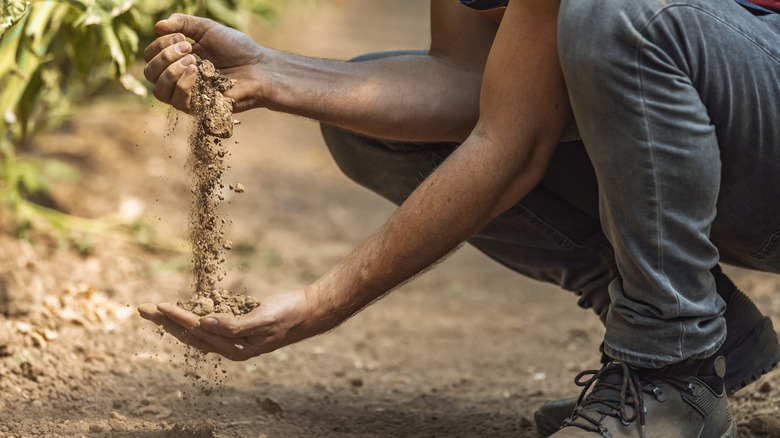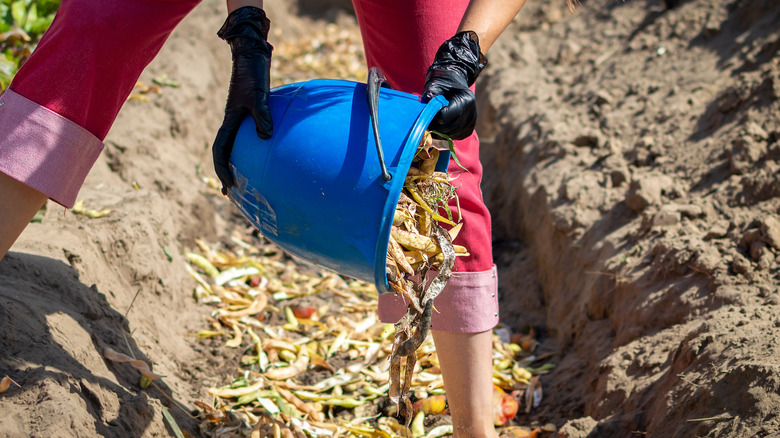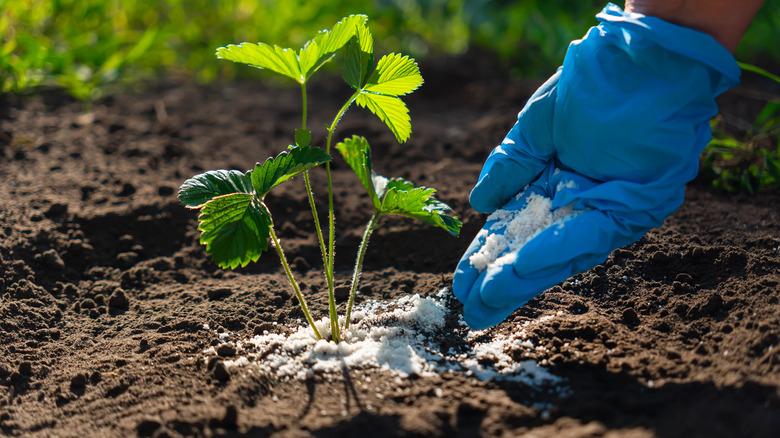Soil Conditioner Vs Fertilizer: What's The Difference?
Although it may be tempting to devote all your energy to monitoring the growth of flowers, vegetables, and other plants in your garden, it's important for home gardeners to give the same amount of consideration to the health of their soil. From dealing with a cracked texture to water that won't fully absorb, there are many reasons why your soil might be in bad shape and in need of some TLC. But when it comes to picking the best remedy, does it matter whether you choose a soil conditioner or fertilizer?
One way to think about the difference between the two materials is their impact on plant growth. Soil conditioners are products used to enhance soil development, targeting the structure of the soil by improving aeration exchange, water retention, and root growth. By rehabilitating deficient soil, conditioners indirectly aid plant growth. Meanwhile, fertilizers provide nutrients like nitrogen and potassium directly to the plant, addressing plant development without necessarily improving the overall soil structure.
If you'd like to give a boost to your soil, most experts suggest doing tests to check the health of your soil. This will determine your soil needs and whether a conditioner or fertilizer is the next best step for your garden.
Soil conditioner: boosting soil structure
The best garden soil has a loamy structure, meaning it's not too loose and not too dense — the perfect mix of clay, sand, and silt. Take stock of your soil texture by grabbing a fistful of moist soil. If it feels too dry or compacted, your garden may benefit from a soil conditioner. This will help loosen up the soil, aid in water retention, and give plant roots more space to spread out.
Organic matter, like pine bark or peat moss, makes great soil conditioners for garden beds that contain too much clay, and homemade compost is great for sandy soils, since it adds beneficial microbes, aiding in plants' nutrient uptake. Some examples of inorganic soil conditioners include gypsum, perlite, and vermiculite. Most gardeners suggest using inorganic options to address specific symptoms. For example, if you want to boost water movement, vermiculite is a good choice.
Fertilizer: providing plant nutrients
If your garden soil is healthy and fertile, but your plants are still a little lifeless, fertilizer is likely your best option. Determining how much fertilizer you need in your garden depends on the condition of the soil as well as the particular plants and vegetables you're growing. For example, your plant may be lacking potassium if its bottom leaves are brown along the edges.
Organic fertilizers, made from plants and animal sources, work by "feeding" the microorganisms and earthworms in the soil. Over an extended period of time, these organisms will break down the organic matter, triggering the release of nutrients for the plant root to gobble up. In contrast, inorganic fertilizers (those derived from synthetic or manufactured sources) supply an instant boost of nutrients to plants, although they do not contain any organic matter for microorganisms to feed on. Thus, their impact is mostly on the plant and not the soil.


